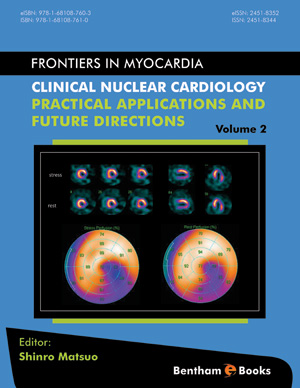Abstract
Recent advances in gated stress myocardial perfusion imaging (MPI) have facilitated the clinical use for assessment of inducible ischemia, viability and cardiac event risks in patients with known or suspected coronary artery disease (CAD). This is because gated MPI enables simultaneous quantitative analysis of regional and global myocardial perfusion and function and because cardiac functional information improves diagnostic efficacies of conventional clinical and myocardial perfusion data in the risk-stratification of CAD patients, more definitively clarifying into a low- or high-risk category. Gated stress MPI can be also applied for early identification of patients with suspected or known CAD at a high-risk for future manifestation of heart failure (HF), for differentiation of HF etiology and for improvement in riskstratification of HF patients. In addition to clinical risks, left ventricular mechanical dyssynchrony assessed by gated MPI can be a novel powerful prognostic marker in HF patients. Thus, ECG-gating approach in stress and/or resting MPI study can contribute to better risk-stratification and to appropriate selection of prophylactic or therapeutic strategy, including optimal drugs or electrical device treatment, in a cost-effective manner in suspected or known cardiac patients.
Keywords: Coronary Artery Disease, Heart Failure, Ischemia, Mechanical Dyssynchrony, Myocardial Perfusion Imaging, Risk-Stratification.






















